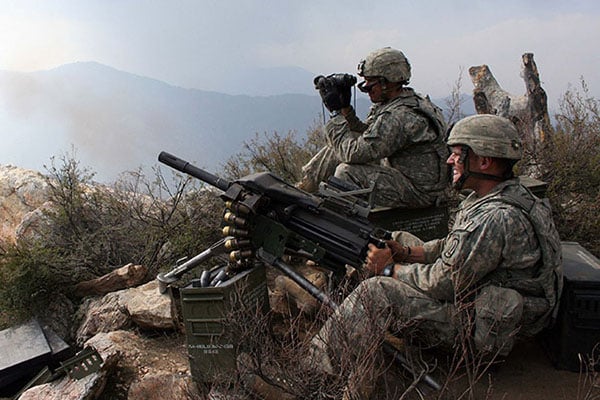
Last Updated on
“Small arm” is a relative term. NATO defines this as any individual or crew-portable direct fire weapon with a bore diameter less than 50 mm, even if capable of defeating light armor and helicopters. In the US military it typically means any weapon that typically doesn’t require a specific job description to employ. One system at the very edge of this strata is the Mk19 Grenade Machine Gun. While GMGs are a more recent entry into the Army small arms inventory, development began in the Navy during the early 1960’s. Looking to boost the firepower of riverine crafts and marine infantry in jungle environments, several multi-shot 40mm grenade launchers were tested that fired the low velocity 40x46mm M406 grenade originally developed for the M79. Among these the most notable was the MK 18, a belt-fed and hand-cranked grenade launcher developed by the Hughes Corporation.
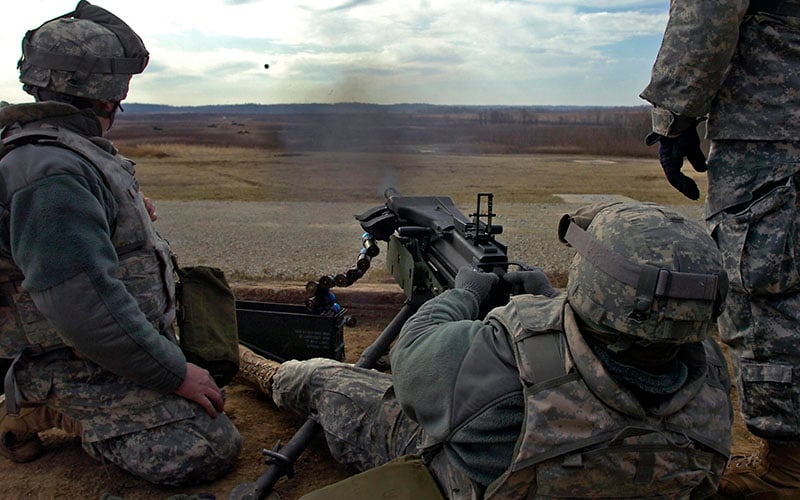
While these designs where a step in the right direction, they all suffered from short effective ranges due to the low pressure cartridge used. Originally designed to be shoulder fired, the M406 High Explosive grenade has a absolute maximum range of about 400 meters. The US Navy looked to boost the range by developing a self-powered fully automatic grenade machine gun around the much higher velocity 40x53mm M384 grenade, a cartridge originally developed for the M75 grenade launcher used on UH-1 and AH-1 helicopters.
The first version was dubbed the Mk19 MOD 0 but didn’t prove reliable enough for field use. Product improvements in the MOD 1 performed effectively enough when tested on Navy patrol craft and the design was refined further. In the late 1970s the design was again overhauled and became the MOD 3. Both the Army and Marine Corps saw the potential in the system for defense, retrograde, patrolling, rear area security and special operations, adopting it for ground use 1983. Saco Defense (now General Dynamics Armament and Technical Products – GDATP) was contracted to manufacture the weapon and has produced approximately 35,000 Mk19 MOD 3 grenade launchers for all branches of the US armed forces.
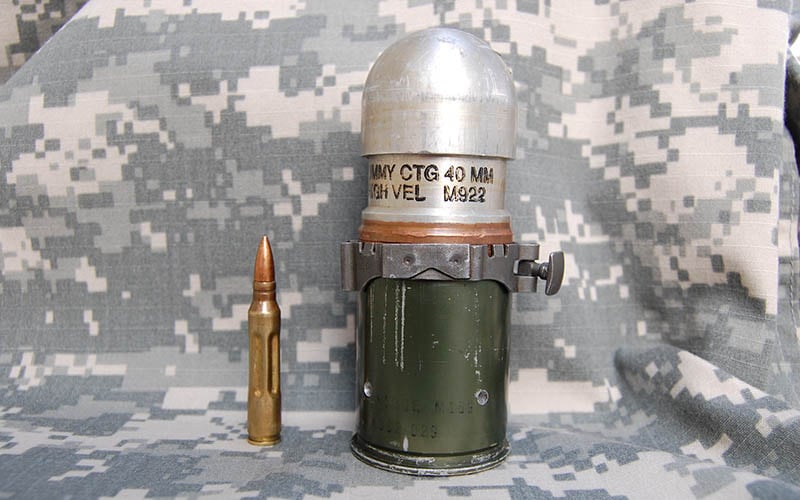
The Mark 19 Model 3 (Mk19 MOD 3) automatic grenade launcher is an air cooled, belt fed, blowback operated machine gun firing from the open bolt. Like Browning’s M2, the Mk19 uses a two-stage feed, drawing each round rearward from the belt of ammunition in the feed area and placing it into a slot cut in the bolt face. Firing from an open bolt, pressing the trigger releases the bolt and the already-positioned round into the chamber and fires when in battery. While the metallic belt is disintegrating, the links remain on the case and are ejected downward with the empties.
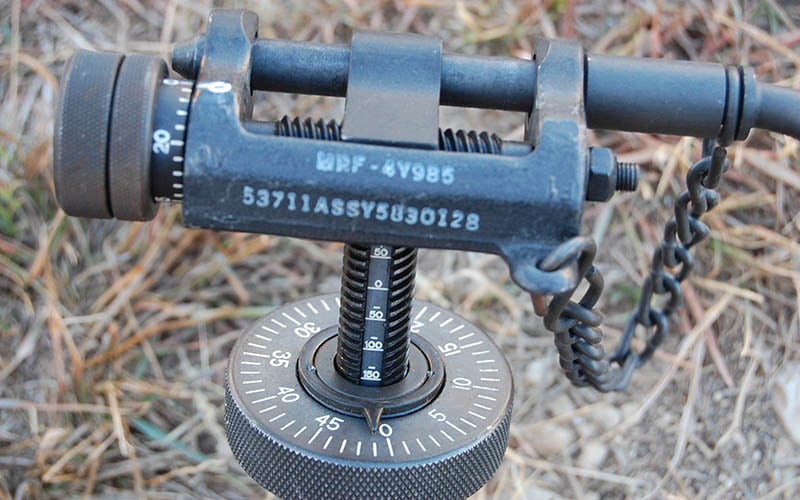
Ammunition is typically packed in 32 or 48 round capacities. Each cartridge is a hand grenade that can be hurled 1.3 miles away and fired from a weapon that can throw about 350 of them each minute. M430 High Explosive, Dual Purpose (HEDP) is the primary combat loading and features a grenade with a Monroe effect shaped explosive charge. In addition to a blast radius of 15 meters, a M430 grenade can slice through up to two inches of rolled homogenous armor.
By default, Mk19s are equipped with a ladder-type rear sight graduated in 100 meter increments from 300 to 1500 meters and a host of sighting equipment ranging from lasers, light intensifier and thermal sights are available.
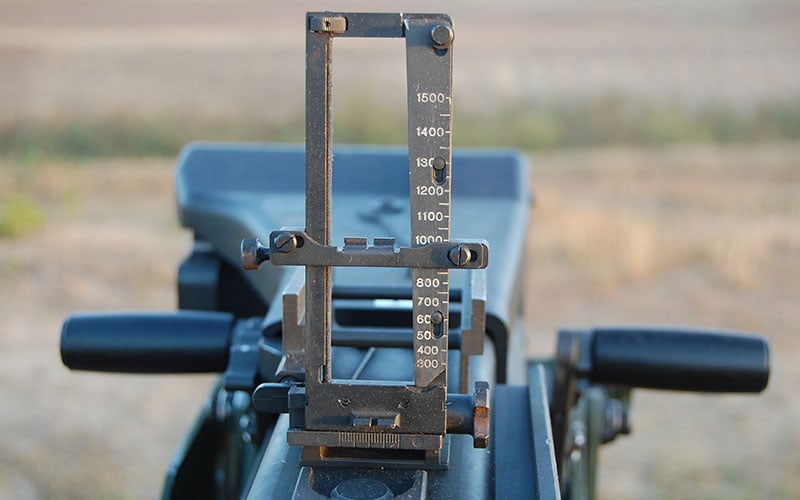
GMG Advantages and Disadvantages
The obvious advantage of grenade machine guns is power. Each projectile has a blast radius and is a real threat to any vehicle, including tanks, and it doesn’t depend on velocity to do its work. The listed maximum range of 2,212 meters is also the effective range as the grenades do just as much damage there. The high trajectory virtually eliminates dead space as targets behind cover can still be engaged. This provides support similar to mortar fire with a weapon organic to the unit. What’s more, the high angle trajectory means that grenades arrive on target from above and naturally attack armored vehicles on a weaker portion of their protection. The Mk19 is an ideal compliment to a heavy machine gun by dropping grenades in where the direct fire can’t reach.
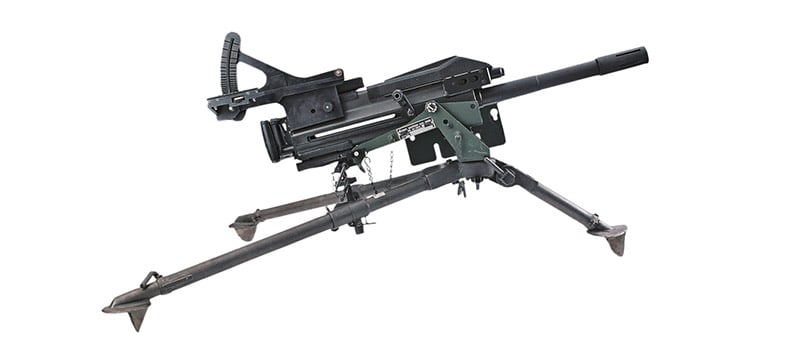
Most of the flaws of these systems stem from personnel misunderstanding gunnery skills and too many troops receive them without a thorough understanding of how to make them best work. Mk19s have foolishly been employed on vehicles working inside urban areas. The grenades require over 30 meters of flight to arm and the explosion is a real danger to the crew inside 100 meters. A flex-mounted light or medium automatic weapon is better here as the heavier gun is too clumsy at close ranges. Similarly, in a defensive position Mk19s need to be assigned a principle direction of fire and placed in a position that allows observing and engaging from distance. The weapon has reach and a high trajectory that makes safe overhead fire easy. One misguided unit I witnessed in a training exercise positioned their Mk19 on the ground next to a gate on the perimeter of their company area as a “display of force.” The furthest target area the crew could observe was a bend in the road some 80 meters away. This is rather like using a mortar for room clearing.
While the low velocity poses no problems with lethality it does make delivering grenades on target more challenging. The rainbow trajectory that enables engagement of dead space has neither danger space nor grazing fire. A .50 BMG machine gun has 700 meters of grazing fire while a M430 grenade has a maximum ordinate of over 51 feet and nearly four seconds flight time! At 800 meters this trajectory height is 72 feet, so slight errors in range estimation yield gross misses.
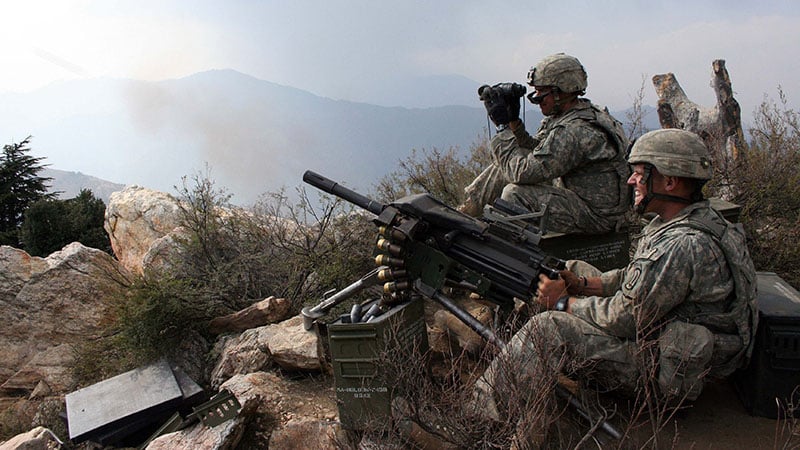
A sharp Mk19 crew demands solid range estimation and observation skill from the assistant gunner and a gunner that can accurately lay the gun and use the Traverse & Elevation mechanism with confidence. Good gunners can manipulate the T&E and fire three bursts during the ten second flight time out to 1500 meters, meaning the third burst is being launched as the first burst arrives on target. This requires understanding mils and converting it to accurate traverse and search adjustments at distance.
In US forces, Mk19s are typically issued with M3 tripods and T&E, the same as used with the Browning M2HB machine gun, and mounted with the robust MK 64 cradle. A product-improved MK 92 cradle, with built-in buffer and mounting adapters is also available. This is essentially the same mounting system all the Browning machine guns have used since World War II.
Mk19 Grenade Machine Gun
- Caliber: 40x53mm
- Type: Blowback operated, belt fed, fully automatic grenade launcher
- Muzzle Velocity: 790 feet per second (M430 HEDP)
- Weight: 35.3 kg gun body plus 20 kg M3 tripod mount or 9.1 kg lightweight tripod mount
- Effective range: 1500 meters (point target); 2212 meters (Maximum Range)
- Rate of fire: 325 – 375 rounds per minute




Leave a Reply